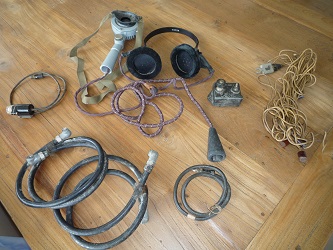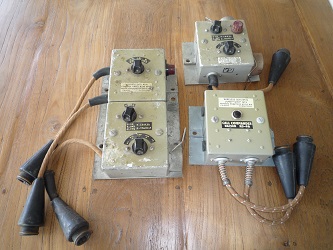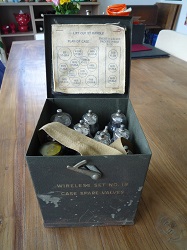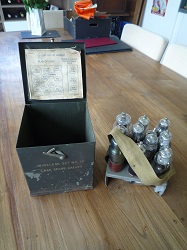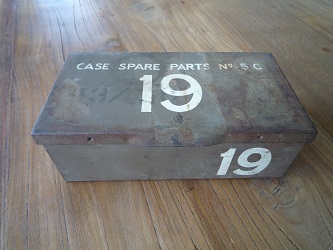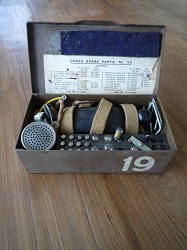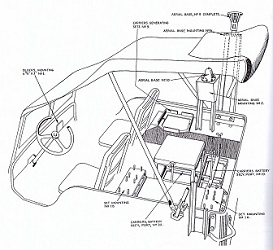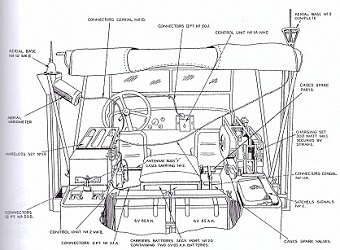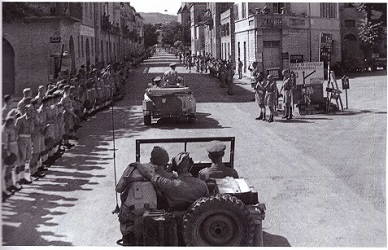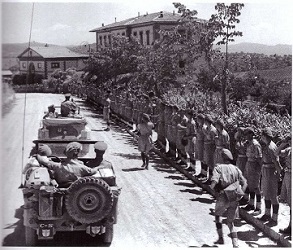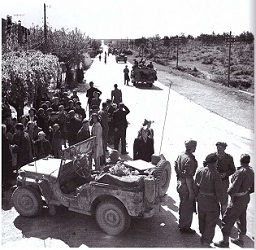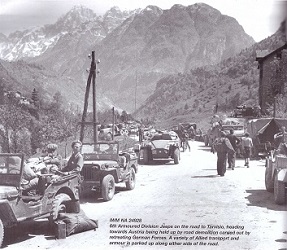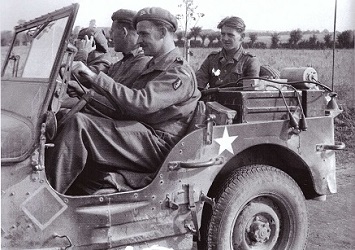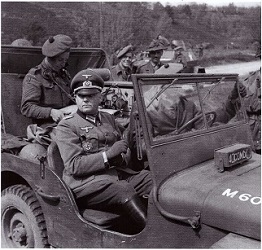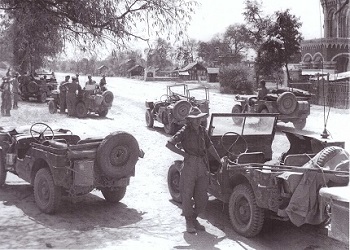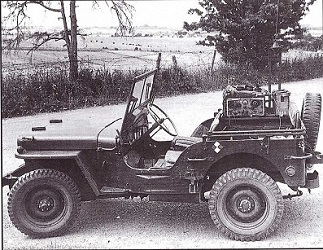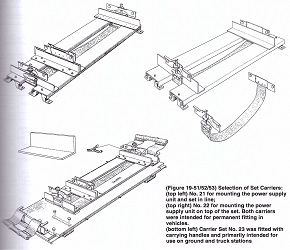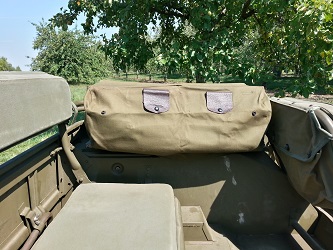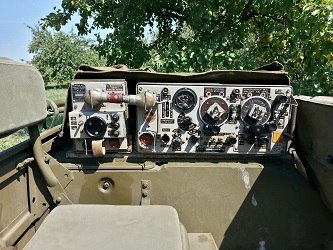Wireless Set 19
I have been looking for a radio for the jeep. Therefore in a first step I looked, which radio would be appropriate for a british World War II jeep.
The book "Equipment of the WWII Tommy" by David B. Gordon gave me a first hint. "The Number 19 Wireless Set was a transceiver first developed in 1941.
[...] Originally they were designed for use in tanks and armoured fighting vehicles. As the war progressed, they became the general purpose wireless
set used in trucks, some command jeeps and for ground stations. [...]" (Gord10, p.334).
Starting from this point I started to look for other literature. A very good source about wireless equipment is the book "Wireless for the Warrior,
Volume 2 (Standard sets of World War II)" by Louis Meulstee. Here the use of Wireless Set No. 19 is described, too. "Wireless Set No. 19 was primarily
developed to fulfil communication requirements in a tank or any other Armoured Fighting Vehicle (AFV). Very soon after this introduction as an AFV
station, the set was also fitted in other vehicles and used as a ground station. [...]" (Meul98, p. W.S.19-3)
Based on this information I started to look for a Wireless Set 19. Finally in June 2014 I found a fairly complete WS19 during the D-Day commemorations
in Normandy.
It is a canadian Wireless 19 Set Mk III. The power supply unit (No 2) has the serial number C-81845, dated 1943 and was produced by RCA Victor Co Ltd. The
transceiver has the serial number C-70308 and has been produced by Northern Electric. For the transceiver I have not been able to identify the year of
production. Any help to identify the production date is highly appreciated.
The power supply unit also contains a pocket watch in a watch holder (for a description of the watch see section Miscellaneous items).
In the next step I wanted to find out, how the WS19 was installed in a jeep. The book "Wireless for the Warrior, Volume 2" by Louis Meulstee gives a first hint, about the vehicle-fitting of the WS19. This is shown in the following pictures.
"Although several fitting versions are known to have been issued, varying only in detail, only one example of the fitting of a Wireless Set No. 19
in an American Jeep is given here. Note that this fitting version is based on the reprint of the official 1944 fitting instruction manual
(WO Code No. 1053) issued as late as September 1953." (Meul98, p. W.S.19-64).
The picture reveals that the aerials were installed on special mountings to raise the aerials to a higher position and away from the metal body
of the car. This is also shown in the second picture. The caption of the second picture states that "the set is mounted on the rear left mudguard,
fitted on a Carrier Set No. 21. The aerial variometer is secured to the rear plate of Aerial Base Mounting No. 5. Apparently no provision
is made to use the set as a ground station. The set is powered by a pair of 6V 85Ah accumulators connected in series, a second pair is carried
as a spare." (Meul98, p. W.S.19-65).
The following pictures show jeeps with installed wireless equipment. It's not always visible, if it is a WS19 is installed. But especially the
varying types of aerial-installations a particularly interesting.
The first two pictures show the same jeep. On the left rear mudguard a wireless set is installed, but it's not apparent what type of wireless set
it is. Nevertheless the picture shows that the F-Rods (with a No. 8 or No 10 aerial base) are mounted on the driver side with a bracket directly
to the tub of the jeep.
The next picture shows a jeep where even two aerials are installed. One of them is mounted on the front left mudguard (again with a No. 8 or No. 10 aerial base). But I doubt that this aerial is fixed to the mudguard. It seems to be only temporarily fit.
In this picture again the aerial is installed on the left rear side, but the exact mounting is not visible. The picture also shows that the variometer is installed on top of the wireless set.
The wireless set in this picture could be a WS19, but it could also be a Wireless set 22. It reveals that the variometer as well as the control unit is mounted to the top of the wireless set. The aerial is mounted on a bracket to the left rear of the jeep tub.
Behind the captured german officer a wireless set can be seen. The top part is a Amplifier RF No. 2 which normally belongs to a wireless set 19. This indicates, that below the ampflifier a WS19 might be installed. On top of the amplifier the aerial variometer is mounted.
Commander in Chief Montgomery talking to soldiers in a jeep with a wireless set. The type of the set is not visible, but it could be a WS19 with additional amplifier on top. Again th variometer is installed on top of the set.
The picture shows several jeeps with wireless equipment. The jeep in front has a special V-aerial.
This is the only picture I found, where the high aerial base mounting is used. In this case the wireless set is mounted on the passengers side.
The pictures show that there were quite a lot of ways, how wireless sets were installed on the jeep and most of them by far did not match the
instructions from the official fitting manual.
I decided, to install the WS19 on the rear driver side fender.
For the installation of the WS19 different types of set carriers were used. These are shown in the following picture.
I installed the WS19 with a set carrier No. 21.
In contrast to the US-Army the british army didn't have a standardised mounting bracket for the aerial base. Therefore I decided to use acustom made mounting bracket. Furthermore, based on the pictures above and because of usability reasons I decided to mount the aerial to the rear of the jeep.
